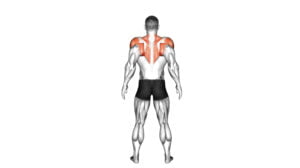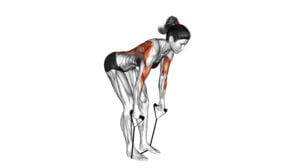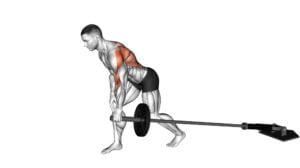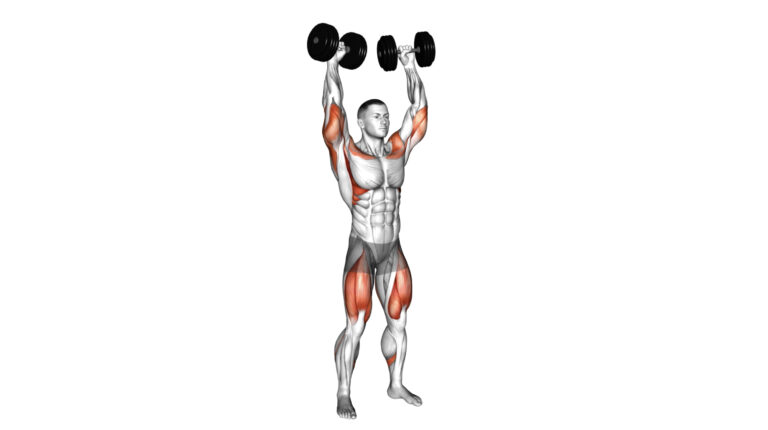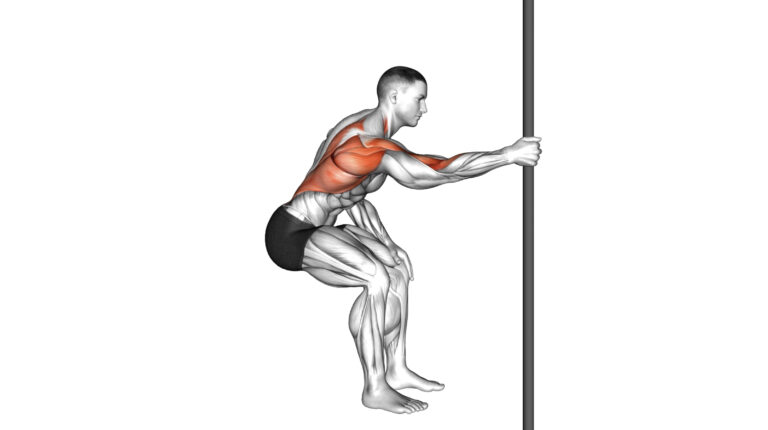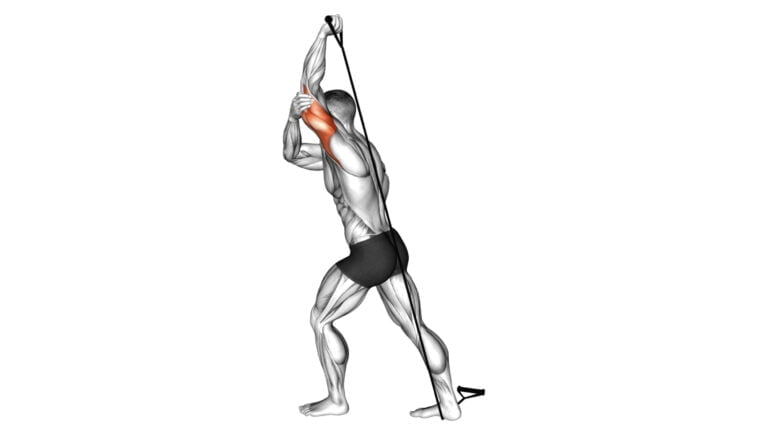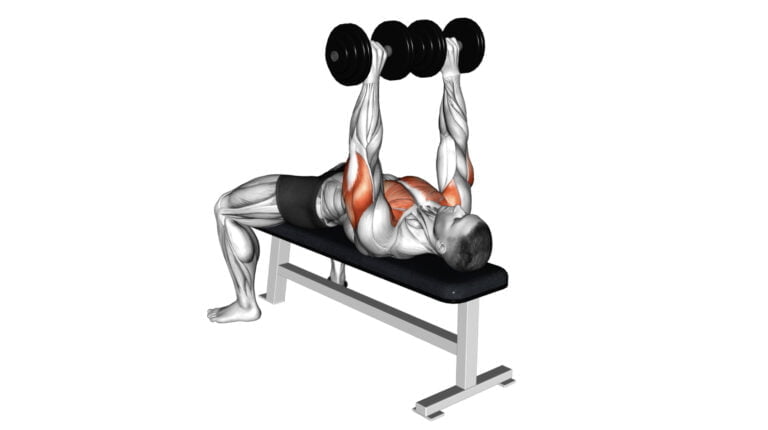10 Effective Resistance Band Shoulder Exercises For Building Strength And Stability
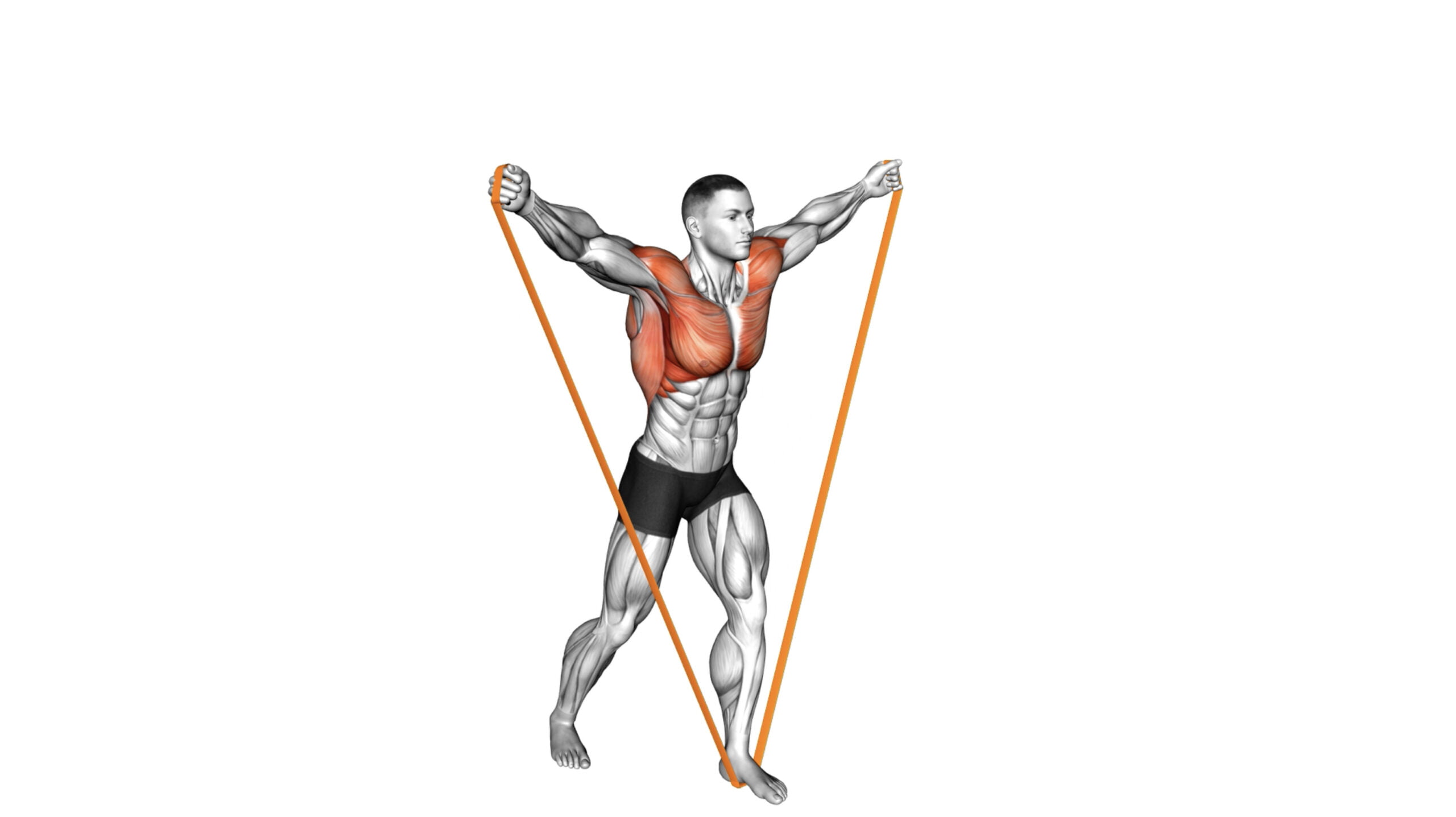
Shoulder pain and weakness can be a major roadblock in your quest for fitness, but with the right tools at your disposal, these issues don’t have to stop you from building strength and stability.
I’m an experienced physical therapist specializing in sports rehabilitation, and through my years of helping clients overcome shoulder ailments, I’ve seen firsthand how resistance band shoulder exercises can be game-changers.
These exercises offer a safe yet challenging way to fortify those all-important muscles surrounding the shoulder—the rotator cuff, deltoids, and even the supportive upper back muscle groups.
Mastering resistance band workouts means unlocking a new level of functional training that’s as effective at home as it is in the gym. With this versatile piece of equipment, you can achieve comprehensive strength without heavy weightlifting machinery—a boon for anyone dealing with or looking to prevent shoulder injuries.

This article will not only outline 10 top-notch resistance band movements but also impart technical wisdom on performing them correctly for maximum benefit. Ready to enhance your shoulders? Let’s dive into some serious strengthening!
Key Takeaways
- Resistance bands provide a versatile, safe, and low – impact option for strengthening shoulder muscles without the need for heavy weights or machinery.
- The exercises outlined can be tailored to individual fitness levels by adjusting the resistance of the band, allowing for customizable workout routines that cater to various strengths and rehabilitation needs.
- Regular practice of these exercises can help enhance posture, prevent injury, and improve overall shoulder strength and stability; consistency is crucial for seeing results over time.
- A balanced diet rich in nutrients supports muscle function and recovery from workouts involving resistance band shoulder exercises.
Benefits of Resistance Bands for Shoulder Exercises
Resistance band shoulder exercises offer a safe, low-impact way to build strength and stability in the shoulders. They can be easily modified to suit individual needs and are portable, inexpensive, and easy to use.
Safe and low impact
Resistance bands provide a safe way to build shoulder strength without the high impact that weights can impose on your joints. People of all fitness levels can use them effectively and with minimal risk of injury.
They gently strengthen the rotator cuff muscles, lower legs, hips, and knees while safeguarding sensitive areas like the shoulder blades and upper arms. This makes them an ideal choice for those recovering from a shoulder injury or dealing with conditions like tendinopathy or bursitis.
Their low-impact nature is especially beneficial for preserving joint health over time. Users can achieve better posture and reduce their chances of developing issues such as subacromial pain syndrome or osteoarthritis through consistent training with resistance bands.
With these tools, you’re not just building muscle; you’re engaging in preventive healthcare that keeps your shoulders flexible and resilient against future strain. Moving on, let’s explore how resistance bands can be modified to meet individual needs and enhance physical therapy protocols.
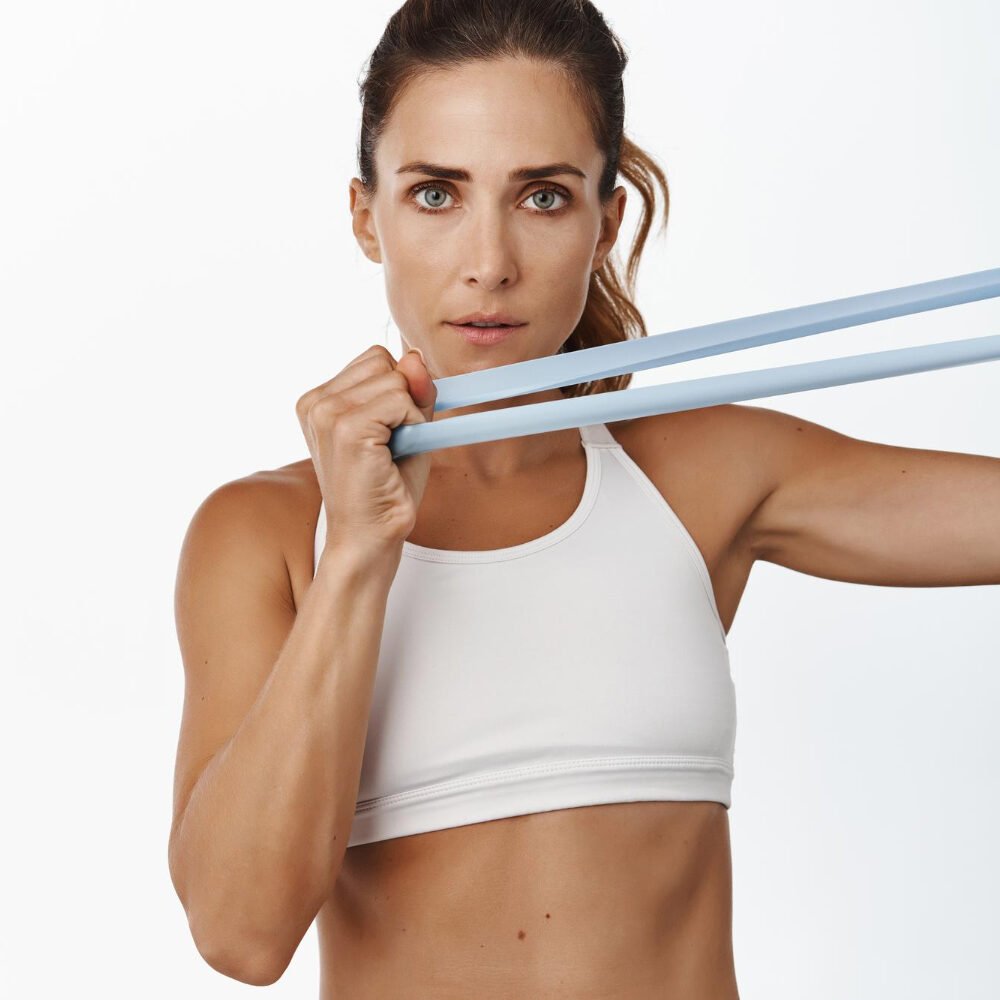
Can be modified to suit individual needs
Building on the safety and ease of resistance bands, one of their key advantages is their adaptability. Whether you’re new to fitness or a seasoned athlete, these tools can scale with your journey.
Adjusting the resistance level lets you customize each shoulder exercise—from gentle rehab movements to challenging strength-building routines. They cater to varying strengths and flexibility needs without risking overexertion or injury.
Imagine taking charge of your workout intensity in real-time; it’s simple with resistance bands. You’ll find that exercises such as band front lateral raises or standing single arm shoulder flexions become more accessible regardless of where you stand on the fitness spectrum.
Personal trainers often recommend them for this very reason—they allow a tailored approach to training, focusing on rotator cuffs, rear deltoids, and every muscle group in between without straining vulnerable joints like the acromioclavicular joint.
Avoiding pain from conditions like shoulder impingement syndrome becomes easier when you have control over every pull and stretch.
Portable, inexpensive, and easy to use
Tailoring your workout to fit your lifestyle has never been easier. Resistance bands are the ultimate exercise companion, offering a level of convenience that other equipment simply can’t match.
Whether you’re at home, in a hotel room, or soaking up the sun in a park, these lightweight and compact tools are ready for action wherever you go—no heavy lifting required.
Less daunting than machines and free weights, resistance bands come with an affordability that matches their simplicity. They empower anyone to build strength without straining their wallet or complicating their routine.
Users from all walks of life find joy in unfurling a band to engage muscles and enhance fitness levels efficiently—all you need is the will to stretch yourself towards better health.
Top 10 Resistance Band Shoulder Exercises
In this section, we will explore the top 10 resistance band shoulder exercises that are effective for building strength and stability in your shoulders. These exercises target different areas of the shoulder muscles and can be easily modified to suit your individual needs.
1. Band standing rear delt row
The band standing rear delt row is a targeted exercise that focuses on the rear deltoids, helping to improve posture and reduce the risk of shoulder injuries. This versatile exercise, performed with a resistance band, offers convenience and effectiveness while being easily adjustable to different levels of resistance.
By incorporating the band standing rear delt row into a regular shoulder workout routine, overall shoulder strength and stability can be significantly improved.
Executing this exercise correctly ensures proper engagement of the targeted muscles while minimizing strain on other muscle groups. The controlled movement in each repetition effectively works out the rear delts without compromising form or risking injury.
2. Band Rear Delt Row
Transitioning from the Band standing rear delt row to the Band Rear Delt Row, this exercise remains a crucial part of strengthening and stabilizing the shoulders. By targeting the rear deltoid muscles, it contributes significantly to overall upper body strength and stability.
Executing the Band Rear Delt Row involves standing on the resistance band and pulling its handles towards your chest, maintaining high elbows. This movement engages both shoulder and upper back muscles, promoting better posture as well as improved shoulder strength.
Proper form is essential here as it maximizes effectiveness while reducing injury risk. Including this exercise in your resistance band routine can lead to noticeable improvements in overall shoulder stability and strength.
3. Band front lateral raise
The band front lateral raise engages the anterior deltoid muscle, targeting the front part of the shoulder. This exercise is effective in enhancing shoulder flexibility and improving range of motion.
It is crucial to maintain proper form throughout this exercise to prevent injury and maximize its effectiveness.
Executing the band front lateral raise is beneficial for strengthening the muscles involved in various daily activities, making it a valuable addition to any shoulder workout routine.
4. Band Face Pull
Engage your rear deltoids, traps, and upper back with the Band Face Pull. This exercise is crucial for enhancing posture and preventing shoulder injuries. To perform it effectively, pull the resistance band toward your face while keeping elbows high and squeezing shoulder blades together.
Control and maintain proper form throughout to fully activate targeted muscles.
Adjusting the tension of the resistance band enables you to vary the intensity levels as needed. Including this exercise in your routine can lead to improved shoulder mobility and overall upper body strength, supporting a balanced physique while reducing injury risks.
5. Resistance Band Standing Single Arm Shoulder Flexion
Engage your anterior deltoid and enhance overall shoulder strength with the resistance band standing single-arm shoulder flexion. Adjusting the resistance level of the band accommodates various fitness levels and challenges muscle endurance, while improving shoulder mobility and flexibility to prevent injuries.
Incorporate this exercise routinely to reap benefits that include improved muscle strength, stability, and injury prevention in your shoulders.
6. Resistance Band Overhead Shoulder Press
The resistance band overhead shoulder press is a key exercise for strengthening and stabilizing the shoulders. This exercise targets the deltoid muscles, promoting shoulder mobility and reducing injury risks.
It can be done either standing or seated, offering workout flexibility. Regular incorporation of this exercise can lead to increased strength and stability in the shoulders.
Incorporating the resistance band overhead shoulder press as part of a routine provides practical benefits by improving overall shoulder function. It aids in building muscle strength that supports daily activities, thereby contributing towards achieving specific fitness goals related to upper body strength and stability.
7. Resistance Band Standing Around the World
Resistance Band Standing Around the World is an effective exercise that targets the deltoid muscles. To perform this exercise, stand with a resistance band looped under your feet and then bring the band up and around your head in a circular motion.
This movement helps improve shoulder strength and stability by targeting the muscles from various angles.
Proper form and control are crucial to avoid injury and maximize effectiveness when performing Resistance Band Standing Around the World. Additionally, modifying the exercise intensity can be achieved by using different resistance bands.
8. Resistance Band Y Press
The Resistance Band Y Press focuses on targeting the deltoid muscles, which are responsible for shoulder abduction and rotation. Using a resistance band makes this exercise accessible to all fitness levels.
By incorporating the Resistance Band Y Press into your routine, you can improve shoulder mobility and reduce the risk of injury. Not only that, but it also contributes to enhancing overall upper body strength when combined with other top 10 resistance band shoulder exercises.
Performing the Resistance Band Y Press helps in strengthening and stabilizing the shoulders while working on muscle flexibility. This exercise is effective in building endurance and promoting proper mechanics in the shoulders, boosting your performance across various daily activities and athletic endeavors.
9. Band Behind Neck Shoulder Press
The Band Behind Neck Shoulder Press is an effective exercise for targeting the shoulders and building upper body strength. It specifically works the deltoid muscles, helping to improve shoulder stability.
Using resistance bands for this exercise adds convenience and versatility to your workout routine. Remember that it’s crucial to maintain proper form and technique when performing the Band Behind Neck Shoulder Press to avoid any risk of injury.
10. Band Lateral Raise
To perform a band lateral raise, stand with your feet shoulder-width apart on the resistance band. Grasp one end of the band in each hand and hold it at your sides. With straight arms, lift the band laterally until they are parallel to the ground.
Engage your shoulder muscles throughout the movement to ensure proper muscle activation and avoid swinging or using momentum.
This exercise effectively targets the lateral head of your shoulders, contributing to overall shoulder development and strength. It can be included in your resistance band shoulder workout routine for multiple sets and repetitions to optimize its benefits for building stability and strength in the shoulder muscles.
Tips for getting the most out of each exercise
To maximize the effectiveness of your resistance band shoulder exercises, focus on maintaining proper form and technique. Avoid using momentum to power through the movements, and instead, engage your shoulder muscles with controlled and deliberate motions for optimal results.
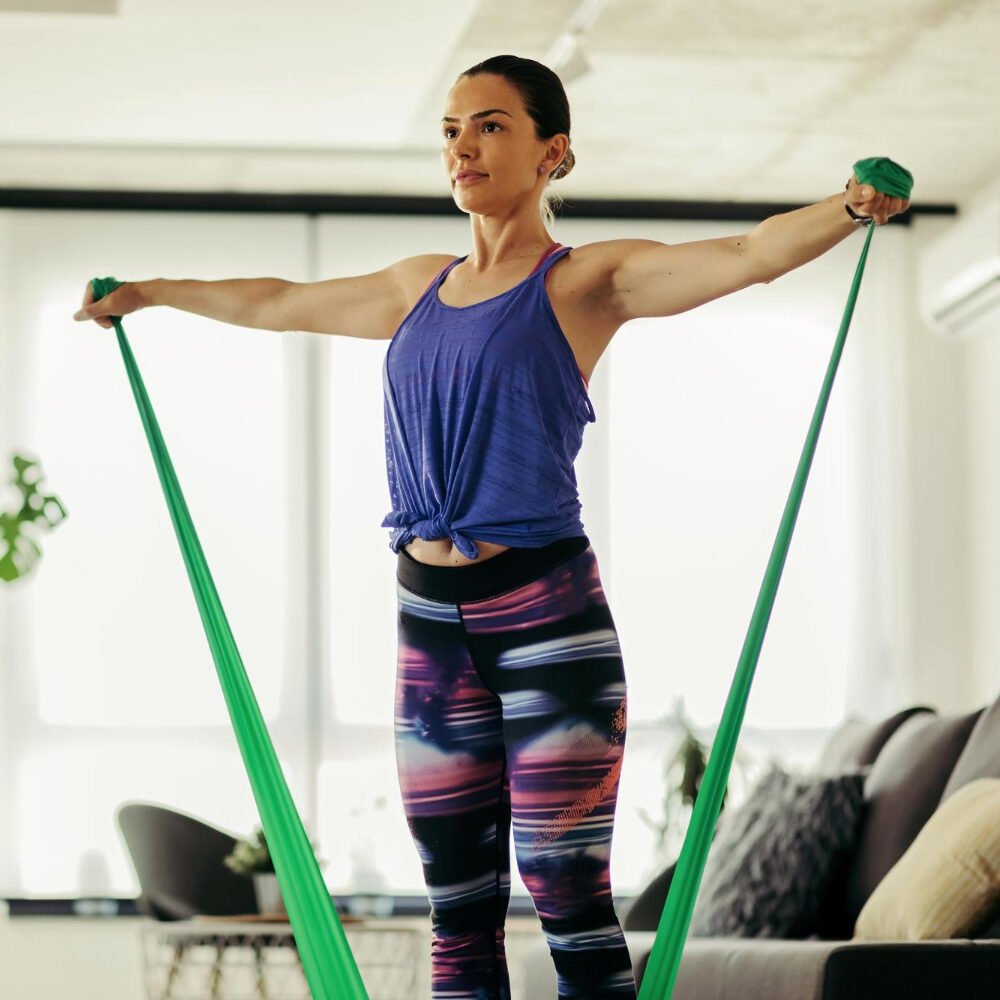
Common Mistakes
- Using too light of a resistance band can hinder progress and prevent building strength and stability in the shoulders.
- Incorrect form can lead to injury and reduce the effectiveness of the workout.
- Rushing through the exercises leads to using momentum instead of muscle strength.
- Neglecting a proper warm – up increases the risk of injury and decreases effectiveness.
- Not including a variety of resistance band exercises leads to imbalanced muscle development.
- Using a resistance band that is too tight puts excessive strain on the shoulders and can lead to injury.
- Neglecting proper rest and recovery hinders muscle repair and growth.
Recommended Sets And Reps
To optimize your resistance band shoulder workouts, it’s crucial to follow appropriate set and rep schemes tailored to your fitness goals. Whether you’re looking to build strength, enhance muscle endurance, or both, here’s a guide on how to structure your workouts effectively.
| Exercise | Goal: Strength Building | Goal: Muscle Endurance |
|---|---|---|
| 1. Band Standing Rear Delt Row | 3-5 sets of 6-8 reps | 2-3 sets of 12-15 reps |
| 2. Band Rear Delt Row | 3-5 sets of 6-8 reps | 2-3 sets of 12-15 reps |
| 3. Band Front Lateral Raise | 3-5 sets of 6-8 reps | 2-3 sets of 12-15 reps |
| 4. Band Face Pull | 3-5 sets of 6-8 reps | 2-3 sets of 12-15 reps |
| 5. Resistance Band Standing Single Arm Shoulder Flexion | 3-5 sets of 6-8 reps | 2-3 sets of 12-15 reps |
| 6. Resistance Band Overhead Shoulder Press | 3-5 sets of 6-8 reps | 2-3 sets of 12-15 reps |
| 7. Resistance Band Standing Around the World | 3-5 sets of 6-8 reps | 2-3 sets of 12-15 reps |
| 8. Resistance Band Y Press | 3-5 sets of 6-8 reps | 2-3 sets of 12-15 reps |
| 9. Band Behind Neck Shoulder Press | 3-5 sets of 6-8 reps | 2-3 sets of 12-15 reps |
| 10. Band Lateral Raise | 3-5 sets of 6-8 reps | 2-3 sets of 12-15 reps |
Select a resistance level that challenges you while still allowing you to maintain proper form. It’s important to note that these recommendations can be adjusted based on individual capacity and progress. Don’t forget to give your shoulders sufficient rest between sets to recover and maximize the effectiveness of your workout. Consistently applying these principles can lead to improved strength and stability in the shoulders.
Moving forward, let’s dive into some pro tips to enhance your training experience.
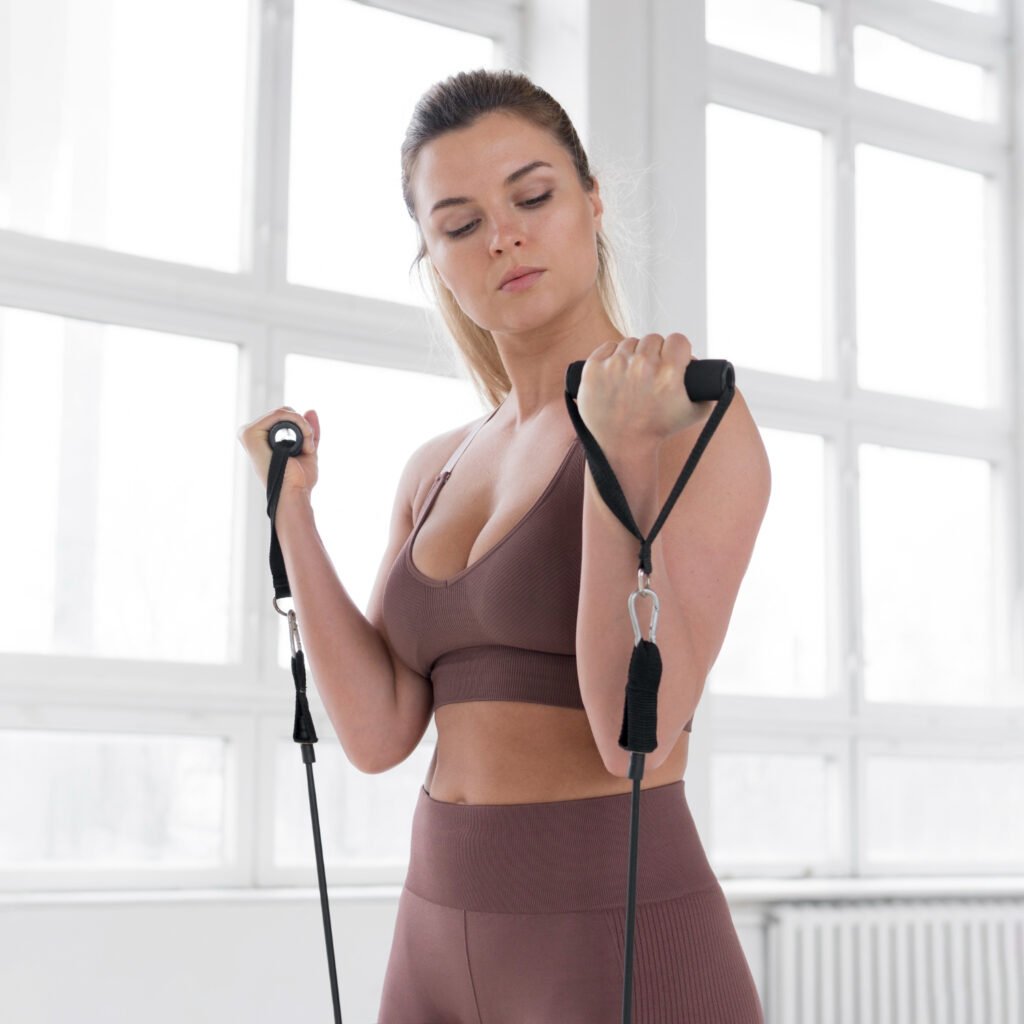
How long to wait for workout results
The timeline for seeing workout results varies based on individual factors such as starting fitness level, consistency, and workout intensity. An average timeframe to notice improvements typically ranges from several weeks to a few months.
It’s important to allow your body enough time to adapt and demonstrate progress, which means sticking with your routine over an extended period. Keep in mind that gradual changes are often more sustainable and impactful than quick fixes or rapid transformations.
As you continue with your resistance band shoulder exercises, be patient with the process and trust that consistent effort will lead to positive outcomes. By focusing on long-term commitment rather than immediate results, you can cultivate lasting strength and stability in your shoulders while enhancing overall physical well-being.
Eat a Healthy Diet
To maximize the results of your workout routine, it’s essential to complement your efforts with a nutrient-rich diet. Incorporate a well-balanced meal plan that includes plenty of fruits and vegetables, lean proteins, and whole grains.
These foods are packed with essential vitamins and minerals that support muscle function and overall performance during resistance band shoulder exercises. Additionally, staying hydrated by consuming an adequate amount of water is crucial for maintaining energy levels and preventing muscle cramps while working out.
Choosing healthy fats such as those found in avocados, nuts, or fish can contribute significantly to joint health and overall muscle function. On the flip side, it’s important to limit processed foods high in sugar and unhealthy fats that can lead to inflammation and compromise your immune system – thereby hindering fitness progress.
Conclusion
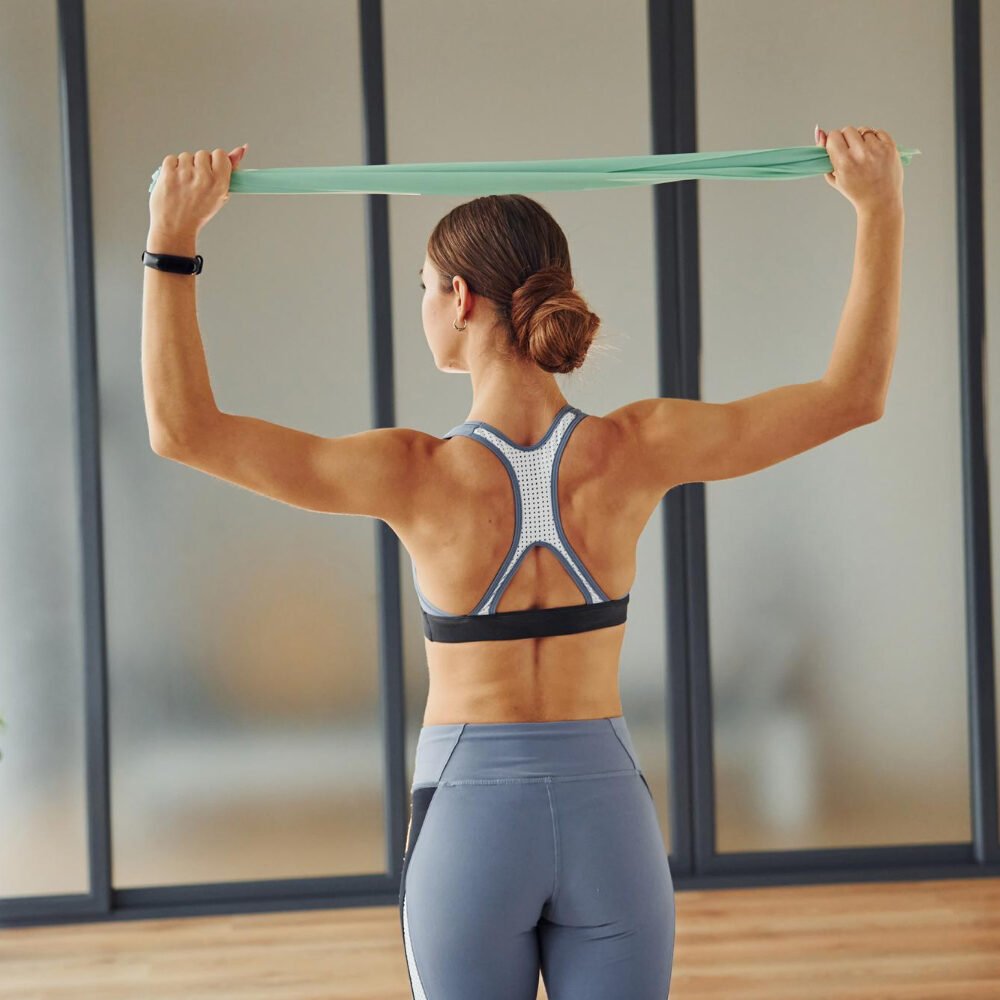
In conclusion, these 10 resistance band shoulder exercises provide a comprehensive and effective way to build strength and stability in the shoulders. They target different muscle groups and offer practical strategies for achieving better shoulder health.
By incorporating these exercises into your routine, you can expect notable improvements in your overall shoulder strength and stability. Remember to maintain proper form and gradually increase the intensity for optimal results.
Stay motivated and consistent with your workouts, as dedication will be key to seeing progress over time.
FAQs
1. What are resistance band shoulder exercises good for?
Resistance band shoulder exercises strengthen and stabilize the muscles around the shoulder joints, including the rotator cuff tendons and trapezius muscles, enhancing overall fitness.
2. Can I do resistance band exercises after a shoulder injury?
After consulting with your physician, physiotherapist, or surgeon to ensure it’s safe, resistance band strengthening can be part of exercise therapy post-shoulder surgery or injuries like labral tears.
3. How does an upright row with a resistance band help my shoulders?
Performing an upright row with a resistance band targets your lateral deltoids and trapezius muscles, promoting strength in both your upper back and shoulders as you pull upwards.
4. Are there specific movements that work on internal rotation of the shoulders?
Yes! Internal rotation exercises using a resistance band will engage the supraspinatus and other internal rotator muscles vital for stabilizing your rotated cuffs against stress or possible tears.
5. Will incorporating external rotation in my workout protect me from injuries?
Incorporating external rotation into your routine bolsters those key external rotators providing support to prevent common issues such as adhesive capsulitis also known as frozen shoulder.
6. What should I remember when doing lat pulldowns with a resistance band for my shoulders?
Keep in mind to maintain proper form – stand straight, contract abdominals firmly; execute the pulldown smoothly by bringing hands down while keeping forearms pronated to effectively work out those essential latissimus dorsi muscles.

Author
Years ago, the spark of my life’s passion ignited in my mind the moment I stepped into the local gym for the first time. The inaugural bead of perspiration, the initial endeavor, the very first surge of endorphins, and a sense of pride that washed over me post-workout marked the beginning of my deep-seated interest in strength sports, fitness, and sports nutrition. This very curiosity blossomed rapidly into a profound fascination, propelling me to earn a Master’s degree in Physical Education from the Academy of Physical Education in Krakow, followed by a Sports Manager diploma from the Jagiellonian University. My journey of growth led me to gain more specialized qualifications, such as being a certified personal trainer with a focus on sports dietetics, a lifeguard, and an instructor for wellness and corrective gymnastics. Theoretical knowledge paired seamlessly with practical experience, reinforcing my belief that the transformation of individuals under my guidance was also a reflection of my personal growth. This belief holds true even today. Each day, I strive to push the boundaries and explore new realms. These realms gently elevate me to greater heights. The unique combination of passion for my field and the continuous quest for growth fuels my drive to break new ground.

